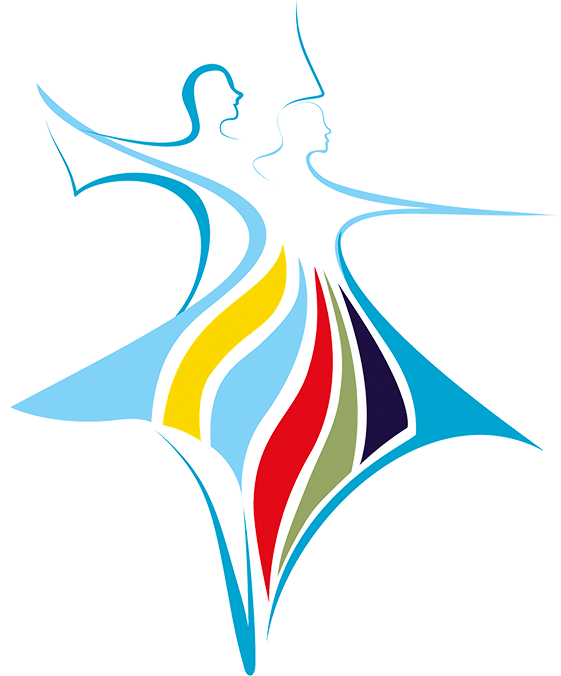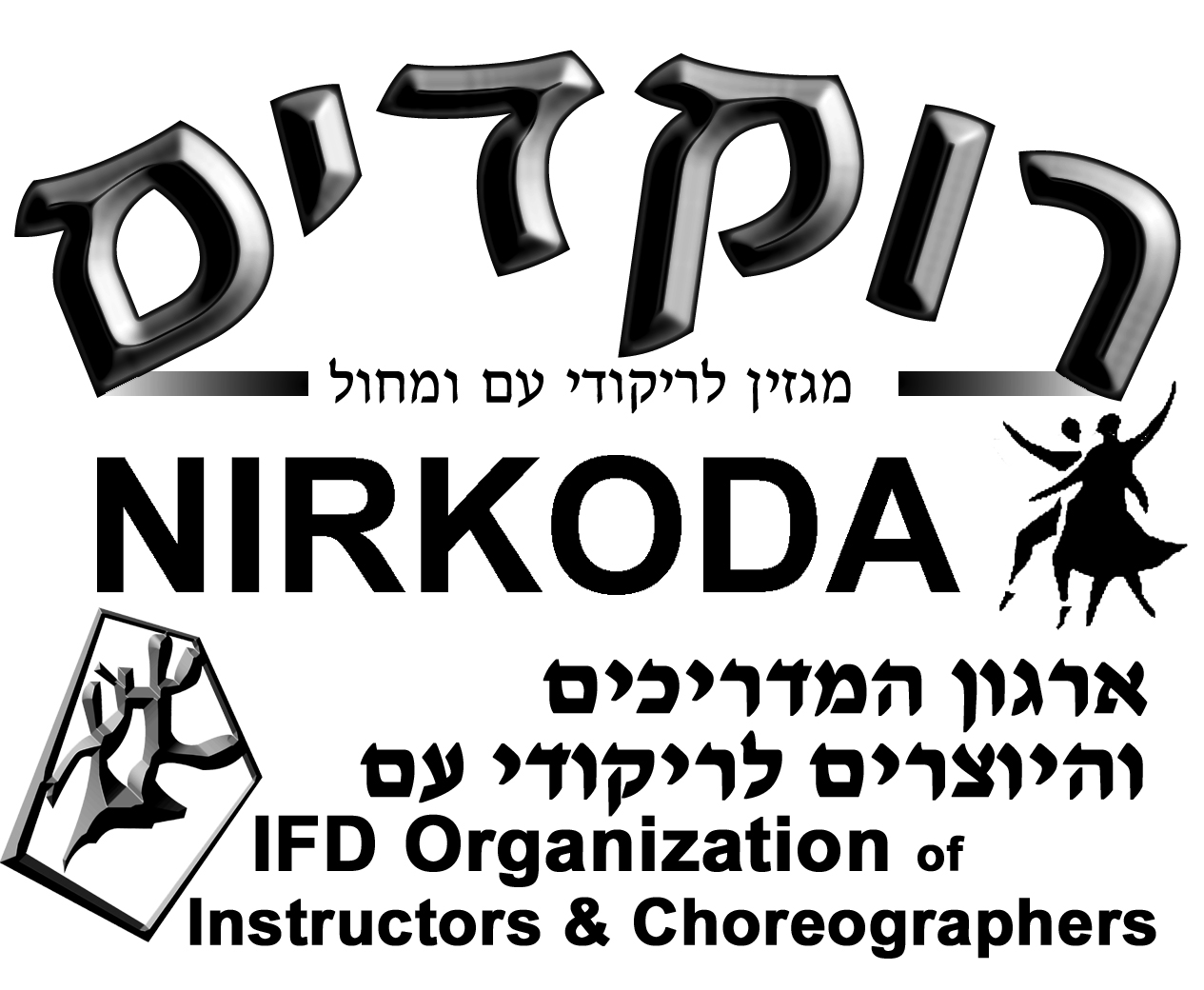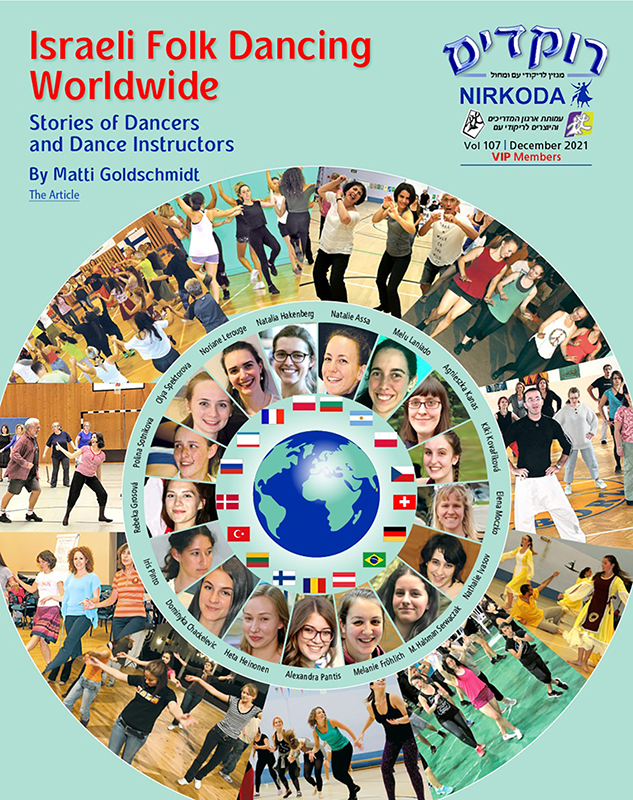- Home
- Rokdim Nirkoda 107
- Shir Rechov – Street Song
Liran Zecharia Amir, 35, is married to Yaniv Amir and is the mother of two children, Lia and Koren Moshe. She was born in Jerusalem and at the age of 19 she spread her wings and moved to the big city – Tel Aviv. She currently lives in Kfar Saba.
Liran holds a Bachelor’s degree in communications and psychology. She studied at the “Beit Zvi” School of Performing Arts and graduated with honors from the course for instructors at Wingate College.
For eleven years, she has served as artistic director and choreographer of the “Orot Habama” dance troupes in Mevaseret Zion under the direction of Hanan Cohen.
Liran began her professional career as a choreographer at the age of 15, starting with the “Mehola Yerushalayim” lehakot [dance troupes] from where she grew and developed to become the artistic director of the leahkot. She founded the the “Or Hagalim”lehakot, in Bat Yam, served as rehearsal director of Lehakat HaStudentim Tel Aviv with Shlomo Maman and was artistic director and choreographer of Lehkat Rishonim in “Hora Yerushalayim”. She was a dancer and drummer in Lehakat “Tararam” in which she performed in many national and international productions and among them, created the opening choreography for the 100th anniversary celebrations in Tel Aviv. She starred in “Nolad Lirkod (Born to Dance) 1” and reached the top ten. She danced in the “Hora Yerushalayim” and “Mehola” lehakot and dances in “Hora Re’im Holon”.
Over the years, she has produced and created as part of the International Film Festival for Children, the Ministry of Foreign Affairs, Tourism, Education and Information, the Jerusalem Municipality, the IDF, the Jewish Agency, and the “Tzabarim” project.
Over the years, Liran has won many awards in Israel and abroad, including:
* Second place at the Karmiel Folk Dance Competition in 2021 with the folk dance, “Shir Rechov”.
* First place in the Contemporary Dance Competition for the Stage at the 2019 Karmiel Festival with the dance, “Shir Eretz”.
* Winner of the Best Folkloristic Dance Award in 2019, at the Karmiel Festival Dance Awards Ceremony, for the stage dance, “Haro’a Haktana”.
* First place in the “Orot Hamachol” Competition in Dimona in 2018 and 2019 with the dances, “Shir Eretz” and “Haro’a Haktana”.
* Winner of the Contemporary Dance Award in Dance For The Stage with the dance, “Lech Eli”.
at the dance awards ceremony in 2018 at the Ashdodance Festival.
* First place, in both the 2013 and 2014 “Grand Prix” Competitions for Children and Youth in St. Petersburg with the dances for the stage, “Tarantella” and “Pa’amonei Ha’Emunah”.
Liran says:
In my work, I believe in the power of movement and the body to challenge social conventions, cultural traditions, to connect past and present, East and West, and of course to connect folk dance with stage dance. For me, this is the essence of Israeliness.
My repertoire includes reference to the sources and heritage of Israel along with giving space for contemporary work. I see the dance mosaic I seek to create as a platform for shaping and reflecting the Jewish and Israeli identity of both the dancers and the audience alike, everywhere. To this end, I put on a show in honor of the 70th anniversary of the State of Israel that took place in Manhattan [in New York City at the Israel Folk Dance Festival and Festival of the Arts, directed by Ruth Goodman and Danny Uziel, RG]. Another show, “MiSho’ah Le’tkuma – From Destruction to Restoration”, took place at the Modiin Cultural Center in 2018.
The bodies of the dancers on stage tell a national story about community, identity, ethnicity and roots. It is a story that I seek to continue, with a connection to and respect for experts from the past and with faith in the renewed work. In addition, I see dance as a developmental educational tool.
This is an integral part of my mission: to present a cohesive, responsible and vigilant Israeliness to the story of our lives here – then and now. I am very emotionally connected to all of my works, but there are three of them that I have had as “milestones” in my life, like a guiding hand from above.
The first – “Agadat Opheilia – Legend of Ophelia” – 2010, a professional crossroad and the choice of my path.
The second – “Haro’a Haktana – The Little Shepherd” – 2017, my belief in pure Israeli folklore.
The third – “Shir Eretz – Song of the Land” – 2019, the work I am most connected to, a work so emotionally complex that every time my dancers just take the first step, I can shed a tear and fall apart from the inside and, on the other hand, be alert and strong. Just as in life.
In addition to my being a creator, I am also, “Liran, the Dancer”. Dance is my biggest passion, I always say: “When I’m on stage, I’m the most complete person in the world; it’s a moment no one can enter. It’s me, my music and my body. My body speaks my feelings with a silent scream. I will not be ashamed to say that there are moments when it’s like a good orgasm”.
The harkadot (dance sessions) became part of me when the corona [pandemic] began. During the first lockdown, I realized that if I did not do something – I would go crazy. At the same time, Gadi Bitton established a program called “Ulpan Bitnua – Studio in Motion.” Very quickly I found myself building a special segment for the choreographers of Israeli dance. My world was then quickly mingled with the world of folk dance. I started going to the harkadot of Tamir Scherzer, corona-adapted harkadot (small) and from there, the dances very strongly captured me so that not a week goes by without at least one harkada!
Beyond the fact that I contracted a “bug” called folk dance, a new and additional window was opened for me and for my work in the stage world and for that, I am grateful! My stage dances, “Haro’a Haktana”, “Orcha Bamidbar”, “Nigun Romani”, “Mecholot Damar”, “Shuvi Le’Beitcha”, “Hora Ahava” and more, are some of my works taken from folk dances and I turned them into dances for the stage that are danced at our festivals in Israel – Karmiel and Ashdodance, and of course, abroad.
About “Shir Rechov” she says:
In 2011, I joined Shlomo Maman to work alongside him with Lehakat HaStudentim. The theme of the Karmiel Festival that year was “Lehakot Tzvai’ot – Military Troupes”.
The talented Haim Asner arranged new music for me for “Yamim Tovim”. Within the musical arrangement was both “Yamim Tovim” and “Shir Rechov.” The dance came about for a choreography competition for Israeli dance that year.
In 2019, for the Folk Dance Competition at the Karmiel Festival, the request was to compose dances to songs that were recorded up to 1979 in either an old or new arrangement and to which dances had never been choreographed. I immediately knew that “Shir Rechov” with its new musical arrangement would be my folk dance for the competition! A hora dance! Without frills – a true folkloristic hora. I took my stage dance, “Yamim Tovim” and modified it to suit a folk dance that fit the song, “Shir Rechov”.
“Shir Rehov” competed in the folk dance competition at the Karmiel Festival in 2021 with entries from the best stage choreographers who took part in the adventure with me. We rehearsed, wore lehaka shirts and sneakers and just enjoyed every magical moment of being together, holding hands and hora dancing
In the last week of September 2021, I taught the dance for the first time at Camp Bitnua directed by Gadi Bitton. I was excited to see hundreds of folk dancers and performers dance it together.
Shir Rechov – Street Song
Music: Yair Rosenblum
Lyrics: Avi Koren
Eize yom nifla yotze la’rechov
Tze la’rechov
Shuv efshar pashut litzno’ach ba’chof
No’ach ba’chof
Kvar lo kar ve’lo ratuv li nora
Tov li nora tov li nora ki
Kama tov lashevet stam ba’shtera
B’li matara
Eize yom nifla tzanach al roshi
Nach al roshi
Mechamem hu shuv kol kach et libi
Kach et libi
Me’ilim kvar muchnasim ba’aron
Sim ba’aron sim ba’aron ki
Shemesh et roshi nosheket pi’om
Sheket pit’om
Eize yom nifla tzanach al roshi
Nach al roshi
Eize yofi shel partzuf ha’rechov lavash lefeta
Me’chayech u’me’ushar gam ha’brosh pit’om kvar shar
Ve’ha’shdera ona lo ka’et be’duet
Habitu eize yom gadol paratz la’kikar
Ratz la’kikar
Hatapu’ach melavlev me’ushar
Lev me’ushar
Bekol ha’kvishim narutz kol hayom
Rutz kol hayom rutz kol hayom ki
Min hashemesh anu kvar shikorot
Kvar shikorot
Eize yom gadol paratz la’kikar
Ratz la’kikar
Eize yofi shel partzuf ha’rechov lavash lefeta
Me’chayech u’me’ushar gam ha’brosh pit’om kvar shar
Ve’ha’shdera ona lo ka’et be’duet
Habitu eize yom nifla yotze la’rechov
Tze
[Note: The Hebrew lyrics make use of a clever play on the sound of the words that is not reflected in the English translation. RG]
What a wonderful day going out on the street
Go out to the street
Again you can just drop on the beach
It’s comfortable on the beach
It’s not cold anymore and I’m not so wet
It’s good for me, very good because
How good it is to just sit on the boulevard
Just because
What a wonderful day dropped on my head
Resting on my head
It warms my heart so much again
Take my heart
Coats are already stored in the closet
Stored in the closet, stored in the closet because
Sun suddenly kisses my head
Suddenly it’s quiet
What a wonderful day fell on my head
Resting on my head
What a beautiful face the street suddenly wore
Smiling and happy, the cypress also suddenly sings
And the boulevard now answers it in a duet
Look at what a great day burst into the square
Run to the square
The apple happily blooms
Happy heart
On all roads we will run all day
Run all day run all day because
We are already drunk from the sun
Already drunk
What a great day burst into the square
Ran to the square
What a beautiful face the street suddenly wore
Smiling and happy, the cypress also suddenly sings
And the boulevard now answers it in a duet
Look what a wonderful day going out on the street
Go out
Dance
Meter: 3/4; 2/4
Formation: Circle
Structure: One verse, 4 sections
Part A Hands joined facing center; move CCW.
1-4 Open mayim step beginning with R to rt. (step R to rt., cross L over R, R to rt., cross L behind R).
5-7 Face CCW: Three running steps fwd on the line of the circle (R,L,R). On the third step, face center.
8& Double time: cross L over R; step on the ball of R to rt.
9-10 Repeat 8& twice more.
11 Cross L over R.
12-22 Repeat counts 1-11.
Part B Face center with hands free. Move in and out of center.
1-2 Kick R fwd., step R fwd.
3-4 Kick L fwd, step L fwd.
5-8 Tcherkessia step rocking fwd and bwd on R (fwd on R, step L back in place, bwd on R, step L fwd in place).
9-10 ½ turn rt. with two steps R, L to face out of center.
11-12 With back to center: Rock back on R, fwd on L.
13-24 Repeat the steps of counts 1-12 moving out of center to end facing center.
Part C Face center; move CCW.
1-2 Step-hop on R to rt. side while lifting left leg backward.
3-6 Mayim step beginning with L over R (cross L over R, R to rt., cross L behind R, R to rt.)
7-8 Step-hop on L crossing L over R with Rt. knee lifted fwd.
9-10 Face center. Step R to rt., cross L over R while clapping hands.
11-12 Repeat counts 9-10.
13-14 Sway R-L.
15-16 Full turn rt. on the line of the circle with two steps: R,L.
17-32 Repeat counts 1-16.
Part D Face center.
1-4 Box step: leap diagonally rt. onto R, cross L over R, step back on R in place, step L to left.
5-6 Moving into center: 3/4 turn rt. with two steps R,L. End with rt. shoulder to center.
7-8 Face CW: Sway R-L.
9-10 Close R next to L while clapping hands overhead; hold.
11-12 Sway R-L.
13-14 Moving out of center: Quick step-tog-step RLR crossing L over R and moving out of center.
15-16 3/4 turn to left with a quick step-tog-step LRL. End facing center.
The dance is done twice followed by an ending:
Ending
1-32 Repeat Part C, counts 1-32.
33-36 Repeat Part D, counts 1-4.
37 Step R fwd while raising arms upward.









Comments
התראות